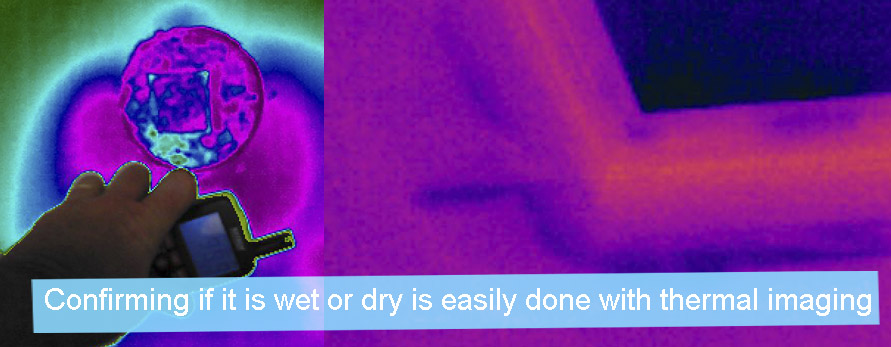FREQUENTLY ASKED QUESTIONS
What is Infrared Thermography?
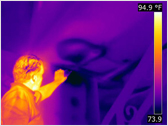
Everything emits radiant heat energy but we are ordinarily unable to see it. Infrared cameras produce colorful thermal pictures of objects that accurately record the temperature differences on and around those objects which can reveal anomalies. As a general rule, light colored areas are warm and dark colored areas are cool.

Water damage is often not readily visible but can be seen with an infrared camera because moisture causes changes. Wet substances show a lower temperature than adjacent dry areas due to the evaporative moisture cooling effect and because absorbed moisture increases the mass.
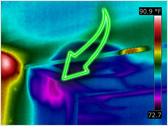
Think of infrared thermography as a giant neon arrow pointing at a problem (or lack of one). Once the problem is located and then documented, the cause can be determined and the blame and liability fixed.
Can Infrared Cameras Detect Mold?
No. The true problem isn’t mold, its water! Mold is simply a byproduct of water infusion into organic materials. Commonly people have directed their attention to mold inspections because the media emphasizes it but our experts can direct you to the true problem. Mold can begin growing in 24-48 hours in moist conditions so swift action is called for if you suspect water damage.What Causes Moisture Problems? Who is to Blame?
There are two main causes of moisture problems in buildings: design flaws and/or construction defects. Infrared thermography lends itself particularly well to finding thermal or moisture problems, structural faults and active plumbing leaks within the building. Improperly installed mechanical, electrical and HVAC systems can also be the cause of moisture problems as is construction with wet building materials. Extreme weather conditions such as hurricanes can exacerbate existing problems.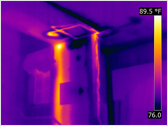
Water can leak into a building from the roof usually at joints like skylights, chimneys and eaves. Moisture damage frequently shows up at doors and windows and faulty installation is usually but not always the cause. A lot of the time, the area of damage is quite removed from the source. This is because water runs down slope and where it intrudes is often not where it ends up.
Should You Do a Thermal Survey?
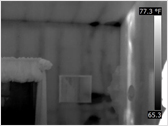
Every building should undergo a survey to uncover thermal and moisture problems during and after construction or before a building is sold. Most observations can be made with the naked eye but infrared technology acts like x-ray vision; it enables us to find and document problems early, before they show obvious symptoms like stains and musty odors. These symptoms can develop into major structural damage and major expenditures to repair.

As the owner or manager of commercial property you’ll want to protect your substantial investment and use thermographic surveys as an integral part of your asset management program. You’ll no longer wonder what condition your building is in…you’ll know.
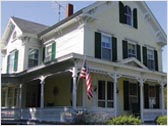
As a housing consumer, you may feel helpless wondering if your builder installed or constructed everything properly. You may wonder how much the busy building code inspectors missed. You may wonder what’s wrong with that house you want to buy. You may wonder what problems lie in wait down the road; we all hear stories. But why trust your fate to trust?
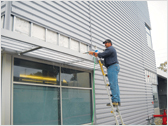
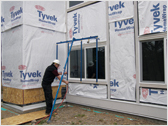
Leak detection is difficult. If you know you have a mystery leak somewhere but have put off repairs, know there is a solution. Our MoistureLocatIR™ experts have been trained in proper water testing of buildings according to recognized standards. Using calibrated spray racks, we can simulate rainfall even when the sun is out and discover the source of your leak.

